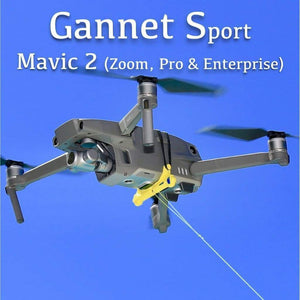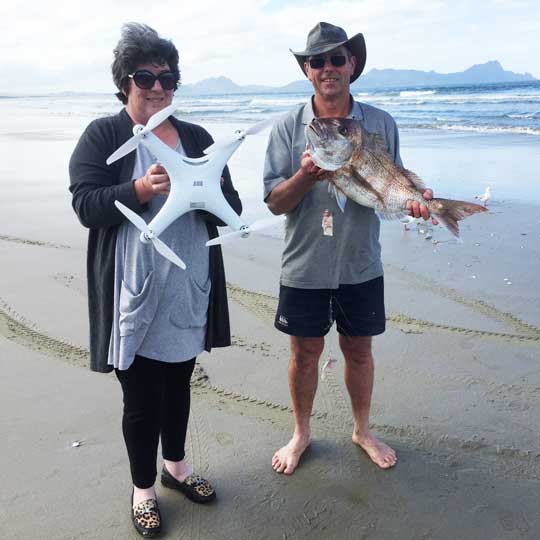
This article will cover the basics of a drone fishing device. We will also discuss what to look out for when selecting your drone, battery life and payload. After that, we'll look at some ways to get the most out of your drone. Continue reading for more tricks and tips. Soon you will have the drone of dreams! Let's begin !..., and maybe even catch a few fish.
Basic drone fishing equipment
The first thing you will need to drone fish is a set of hooks. The fishing line should be doubled and should be mono or braid. It should be tied with a Cat's Paw Loop, Uni knot or Uni knot. You will also need a sinker (2-8 oz) and hooks (to attach to each section of the backbone). The final step is to attach the lead loop and end loop of your drone using a snap swivel.
There are many options for creating a fishing drone. An easy way to make a fishing drone is to attach a hook onto the drone's landing gear. Then spin the line until the line is released. You can also use a dropper or drop line to keep the fishing line down below the drone. A dropper allows you to keep the main line below the drone without getting tangled with the propellers. You can add accessories to your fishing drones, such as a dock and a battery pack.
Once you've purchased the basic drone fishing rig, you'll need to purchase some additional equipment. You will need a 700-meter fishing line and a bait dropper device. These are optional extras but will make your drone fishing trip more enjoyable. A good drone will give you a clearer view of your surroundings, and you'll be able to spot fish more easily.

Payload on drone fishing rig
Be aware of safety precautions if you want to catch fish by drone. Strong winds and rain are not safe conditions for your drone to fly. Here are some steps to follow:
First, ensure that your drone can carry a lot of weight. It will not be stable when loaded with braided line or heavy lures. You should also be aware that the wind can cause the drone's drift if you fish at the coast. It's also important to check local regulations and laws, as some may not allow fishing from a drone. A drone with good carrying capacity is essential if you plan to fish from it.
Next, you need to decide which accessories will be needed to mount your drone. To reduce the weight distribution issues, it is a good idea to use a rigging system with a central attachment point. Motor struts or landing gear and the legs of the drone are all good options for attaching. You should avoid attaching anything to the camera or to the gimbal. This can cause damage. One simple solution is to tie a length fishing line from one end to the other. This can be secured with tape to prevent it from falling out.
Battery life for drone fishing gear
Before you go fishing with the drone, check that the batteries are charged and all other equipment is working properly. This will keep your drone's battery charged and allow you to fish instead of worrying about charging it. Some drones have solar panels or car batteries that allow you to charge them. Make sure your batteries are fully charged before you start. This will ensure that your drone can fly immediately after you arrive at your fishing spot.

The drone's flight time is another important aspect to consider. While some drones can fly longer than others, the average drone can fly for around twenty-two mins. This is a great option if you plan to spend hours on the ocean with your drone. You should also be aware that drones with low endurance are inoperable, making it difficult to catch fish.
Once you've set up your fishing gear, attach the line clip to your drone's legs, or to your motor struts. Next, attach the bait line to the fishing line. When you are ready to drop your bait, make sure you lock the reel. The tension will build when you pull the line out and let the drone drop the bait into the water. If the battery is not charged properly after each use, it will not function properly.
FAQ
Is it safe to fly a drone while driving?
Flying a drone while driving is dangerous because you could crash into another vehicle or object. You also risk hitting pedestrians or other animals. In addition, you could damage your car by hitting power lines, trees, or buildings.
Can I fly my drone through my neighborhood?
Yes! These are called UAVs (unmanned aircraft vehicles). There are many types of drones on the market today, including small quadcopters and large fixed-wing aircraft. The FAA recently released new rules for commercial UAV use, meaning that they are now legal to fly for business purposes. But, it is important to note that UAVs being flown near airports can interfere with air traffic control systems. Before you operate one, you need permission from local authorities.
Is it possible to fly a drone at high altitudes without a license?
The FAA has no limits on the maximum height a drone can fly. You will need to register your unmanned aircraft system (UAS), including the registration number and model name, weight, dimensions, serial number, manufacturer's number, date manufactured, and any other information.
What US states are drones legal?
A drone can be legally operated for recreational purposes. The Federal Aviation Administration has created guidelines to allow small unmanned aircraft system (UAS) use. These UASs have to be registered with FAA before they are allowed to fly. These UASs can also be flown by commercial operators if they are allowed to fly under certain conditions.
Can I fly my drone at my local park?
You can fly drones in parks around the globe. Due to safety concerns, certain countries don't allow you to fly drones in parks. Take a look at our list of legal places to fly drones for entertainment.
Statistics
- According to Indeed, a drone pilot gets paid $25.73 per hour on average in the US. (dronesgator.com)
- According to industry research from ZipRecruiter , there are 10 cities where the typical salary for a Drone Pilot job is above the national average. (dronesgator.com)
- Research and Markets predict a growth rate of 51.1% over the next five years. (thedroneu.com)
External Links
How To
How To Fly Drones For Beginners
A drone refers to a remote-controlled aircraft designed for aerial photography, surveillance and scientific research. Drone technology has existed since World War II. DJI's Phantom series of quadcopters was the first to be commercially used. Many types of drones have been made available since then, from beginner-friendly models such as the Parrot AR Drone 2.0, to high-end multi-rotor craft such as the DJI Mavic Pro.
There are several ways to fly a drone, including;
-
Remote control - This method uses a control device attached to your hand, which enables you to steer the drone through its flight path. There are two main types, On/Off switches (like radios) and joysticks.
-
Manual Control – This allows remote operation of the drone via GPS coordinates using a smartphone application. The app will provide instructions and help you to locate the drone.
-
Autonomous flight - The drone takes over the piloting duties. It's basically flying autonomously without any human intervention. A drone must have a builtin camera and sensors capable to capture images and other data.
-
Triggered flight - This is similar to manual control except that the pilot sets up a preprogrammed route and the drone follows the route until it reaches its destination. Once the programmed route has been completed, the drone returns to the base automatically.
-
Landing Gear – Some drones are equipped with landing gear, which allows them to safely land if they lose power during flight.
-
Goggles – Pilots often wear goggles while flying to keep themselves safe from any debris.
-
Camera - Some drones can be equipped with cameras which enable you to capture photos from the sky.
-
Obstacles-Some drones come with obstacle avoidance devices that keep them from hitting obstructions.
-
Speed - Some drones can travel at speeds over 40 mph.
-
Battery Life - Most drones can last between 20 minutes to 3 hours, depending on how much power you're using.
-
Some drones are capable of traveling up to 30 miles depending upon their make and model.
-
Power source - Some drones need an external power source, while others use internal batteries.
-
Weight - Some drones are lighter than others, while some models can weigh as much as 4 pounds.
-
Size - Drones can range in size from tiny devices that can fit in your palm to heavy crafts that weigh 50 pounds.
-
Price - All drones fall within a specific price range, from high-end models that can cost thousands of dollars to lower-cost options starting at $100.